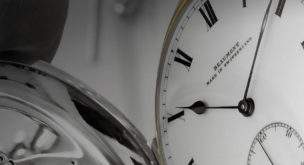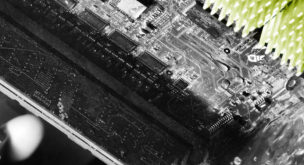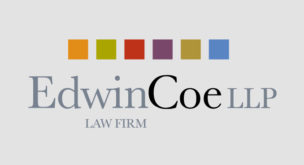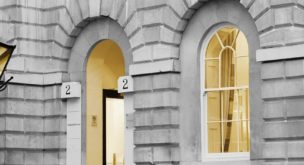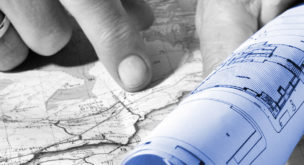Press Coverage - 07/07/2017
Designs – appeals to the appointed person
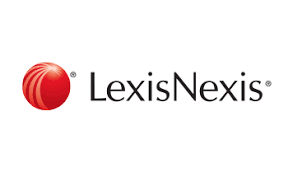
This article was first published on Lexis®PSL IP&IT on 26 June 2017. Click for a free trial of Lexis®PSL.
IP & IT analysis: The first decision of an appointed person in a designs case was recently handed down. Nick Phillips, partner at Edwin Coe, explains the new appointed person regime and examines the major advantages and implications.
When was the new appointed person regime introduced for design cases, and what is its purpose?
The appointed person regime was introduced for designs cases by the Intellectual Property Act 2014 (IPA 2014). This came into force in October 2014, although it took until 18 May 2017 for the first decision of an appointed person in a designs case to be handed down (Appeal O/253/17).
The purpose of the appointed person regime is to be a lower-cost appeals process for cases before the United Kingdom Intellectual Property Office (UKIPO). Before IPA 2014 came into force these could only be appealed to the High Court. The appeal is a review of the hearing officer’s decision and is not a full re-hearing of the case. Such an appeal will only be upheld if the appointed person is satisfied that there has been a distinct and material error of principle in the hearing officer’s decision, or that the hearing officer was clearly wrong.
What steps should a party take, in order to have an appeal heard by the appointed person?
After the hearing officer in the UKIPO has made their decision, the party has 28 days to submit a Form TM55 ‘Notice of Appeal to the appointed person’ if it is ex-parte, or Form TM55P if the result will affect two or more parties. The former is free but the latter costs £250. These are alternatives to an appeal to the High Court. The appointed person will normally make a decision following an oral hearing, but a decision may occasionally be taken on the papers. Parties may be represented at the appeal by a solicitor, trade mark attorney or barrister, or they may be unrepresented.
What are the advantages of this system over taking action in the High Court?
The main differences between the appointed person and the High Court are cost and finality. The appointed person system is lower cost (so the associated risks of unsuccessful proceedings are lower) and there are no further rights of appeal (whereas a decision of the High Court can be appealed to the Court of Appeal and then the Supreme Court with the necessary permissions).
What practical steps can IP lawyers take, in order to ensure that their clients are able to take advantage of the new regime?
In practical terms, IP lawyers need to be aware that this route of appeal exists. As to whether it is an appropriate route to follow, as Martin Howe QC said in Appeal O/253/17:
‘Unless there is a relevant difference between substantive designs law and trade mark law which justifies a different approach, or some other specific and concrete reason, the appointed persons for designs appeals will follow and apply the established practice and procedural decisions of the appointed persons in trade mark appeals.’
This means that IP lawyers should examine their experiences with appointed persons for trade marks, as this is likely to be informative as to how appointed persons will act in registered designs cases and therefore whether clients would be better off appealing to the High Court or to the appointed person.
How has the regime been received by practitioners and the industry?
Compared to trade marks there are not that many designs cases to which this regime would apply. For most practitioners, the handing down of the first designs appointed person decision may be of more academic than practical interest. It will, however, be something to bear in mind when running designs cases in the UKIPO. This may be particularly relevant because the appointed person will be able to hear appeals from the UKIPO designs opinions service (when this becomes available) and in relation to unregistered design right cases. The existence of a lower cost route of appeal may make these more popular.
What are the trends in this area? Do you have any predictions for the future?
The changes to designs laws in 2001/02 have made design protection more popular and registered designs are generally seen as providing good value for money although decisions such as the ‘Trunki’ judgment (see Magmatic Ltd v PMS International Group plc (Comptroller General of Patents, Designs and Trade Marks intervening [2016] UKSC 12, [2016] 4 All ER 1027) may have eroded the popular confidence in the broad scope of designs protection to a certain extent. This confirmation by Martin Howe QC that appeals to the appointed person in designs cases will be treated in a similar way to trade marks is likely to increase confidence in the system and it may be that the combined effect of these factors will see the UKIPO being used more as a forum for designs disputes (although generally not for infringement proceedings). This may be especially the case after the UKIPO designs opinion service comes online. Under IPA 2014, any Regulations that the Secretary of State makes to give the UKIPO power to make opinions on designs, ‘must provide for an appeal relating to an opinion given under the regulations to be made to a[n appointed person]’. This may well be seen as a cost-effective way for clients with design disputes to have the merits of their case examined by a senior lawyer (such as Martin Howe QC) on a non-binding basis for a limited cost.
If you have any questions about this topic or any other Information Technology issue please contact Nick Phillips.


